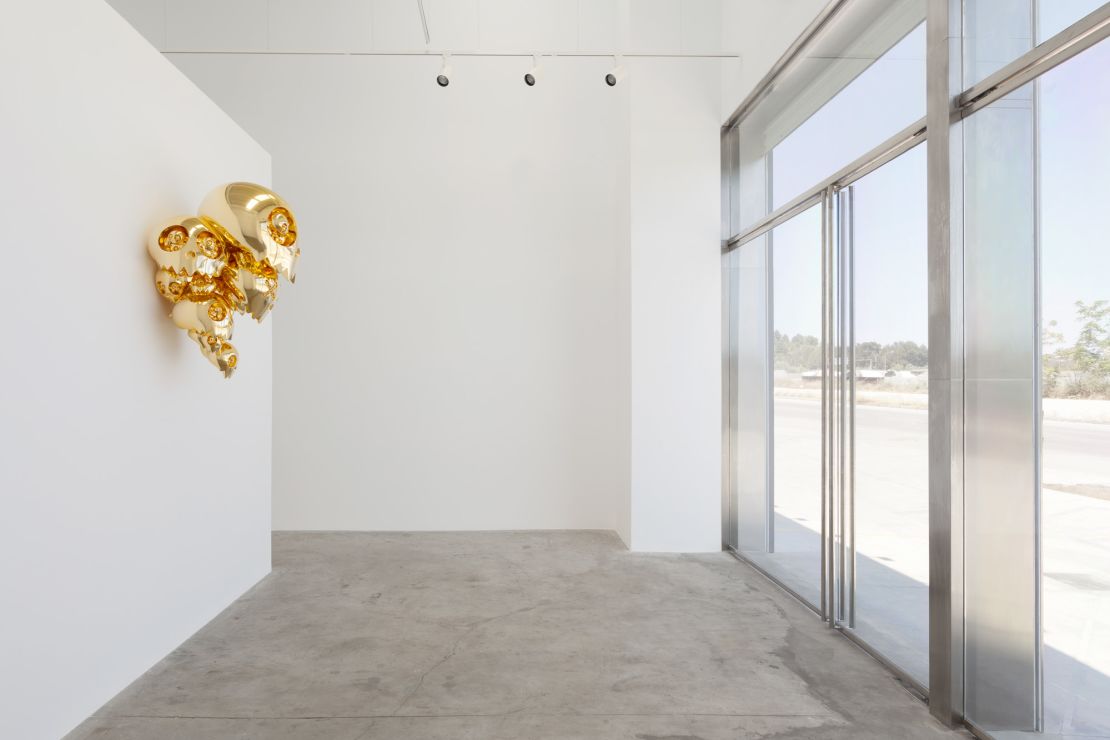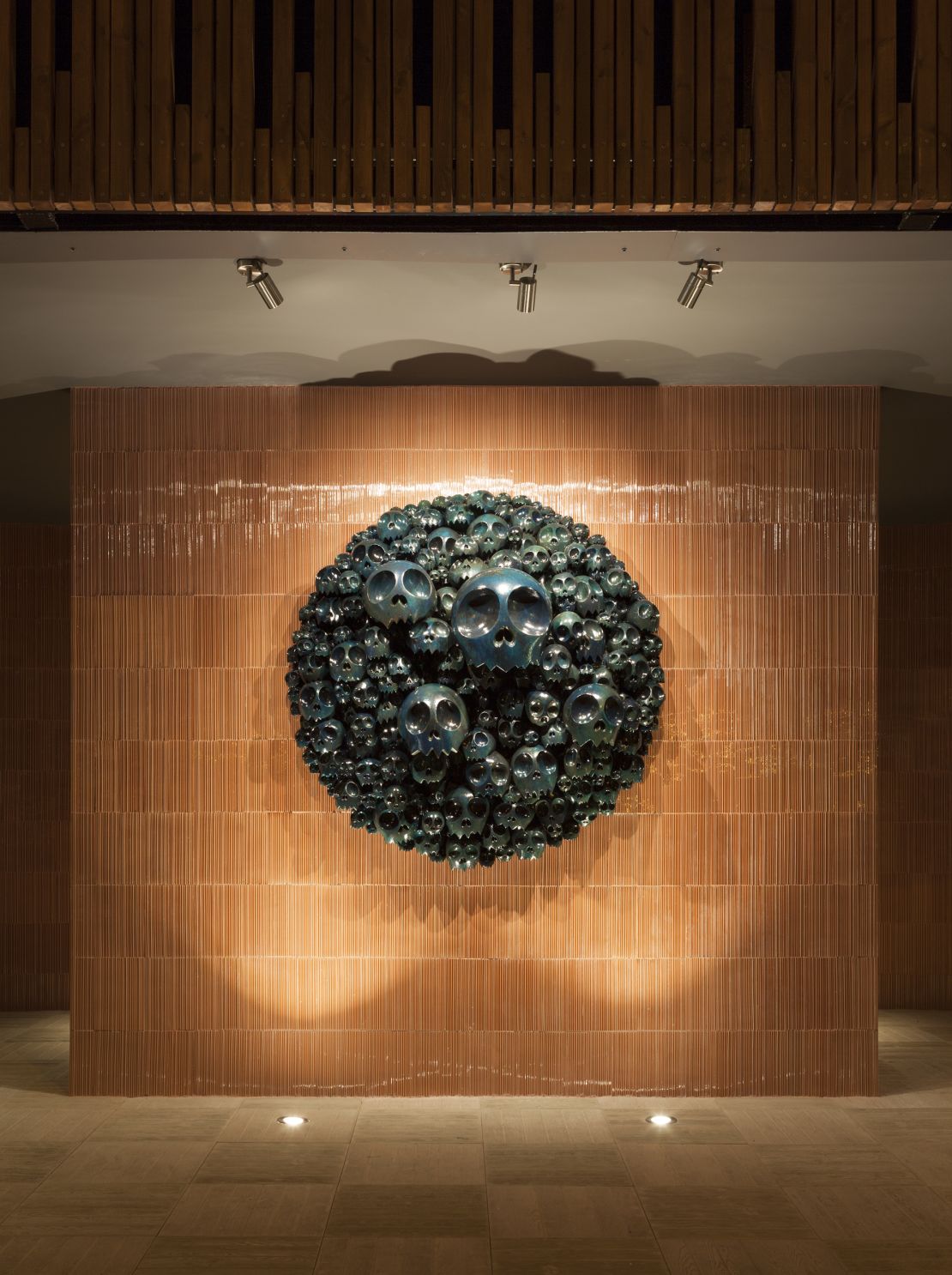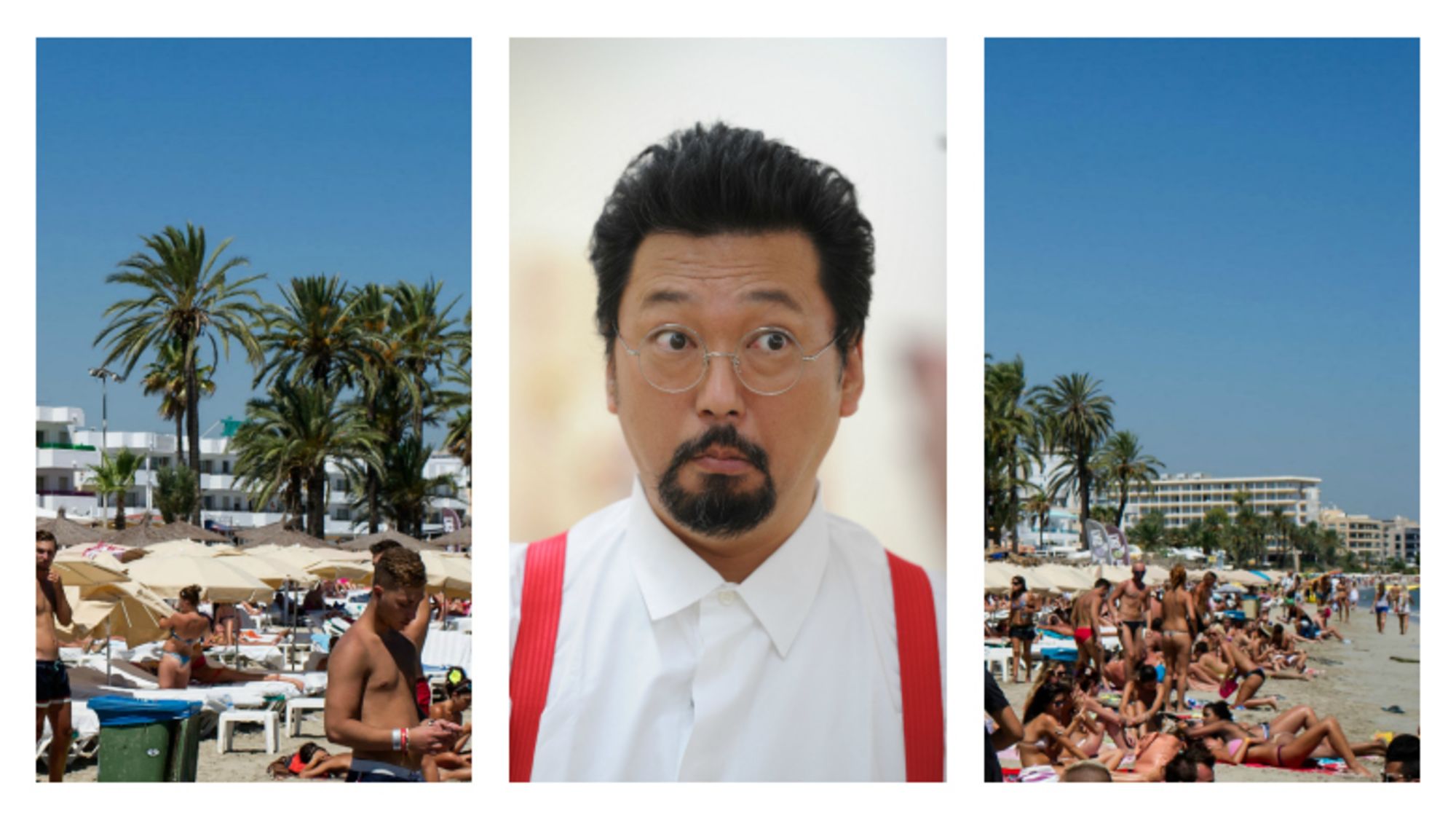Artist Takashi Murakami might be the only one not concerned that Ibiza’s raging party scene will prove a reluctant audience for his new exhibition, which opened on the Mediterranean island this week.
Vacationers are arriving fast in Ibiza for a summer party season where Murakami’s skull-stacking sculptures and “superflat” flower ball paintings are jostling for attention with a headline DJ set from David Guetta at superclub Pascha and a poolside rave hosted by trance music star Armin van Buuren.
But the 53-year-old psychedelic pop provocateur believes the gallery art experience can peacefully co-exist with the desires of all-night ravers. “I believe that most of them are looking for experiences they can’t get in their daily lives,” he says. “Art fits well with that environment and can fulfill such a desire.”
The enigmatic Murakami has made a name for himself by moving art outside the gallery. His manga-influenced artworks have made him a global star, heralded beyond cliques of art collectors and investors.
His cutesy anime imagery has spread through collaborations with music stars Kanye West and Pharrell Williams, plus the Supreme skateboarding company and, recently, Belgian confectionery brand Frisk, which created mints in the shape of Murakami’s trademark flowers and skulls.
A 2003 Murakami collaboration with Marc Jacobs, then creative director of Louis Vuitton, was the fashion label’s most successful ever venture, with sales reported in the hundreds of millions, and “turned Pop art’s flirtation with commercialism into an out-and-out love affair,” says contemporary art critic Ben Luke.
The Ibiza show – based in a 3,000 square-foot exhibition space organized by gallerists Blum & Poe – is backed by Guy Laliberté, the billionaire Cirque du Soleil co-founder and long-time collector of Murakami art.

Laliberté has a home on the island and claims a “philanthropic mission” to broaden its cultural offering. The exhibition aims to take art to the party, too, with additional works exhibited at Ibiza Gran luxury hotel, and restaurant HEART Ibiza. For Laliberté, a man who once traveled to the International Space Station to take pictures, crashing the party island with an art show will be light work.
Here, Murakami is debuting more than a dozen new paintings and sculptures, including a bouquet of howling skulls greeting tourists arriving at the entrance to Laliberté’s Casino de Ibiza. On this, Murakami is typically cryptic: “The sculpture was made with this location in mind.”

Many of Murakami’s new works will present more of a challenge to Ibiza’s young, sun-blushed ravers than his earlier famous work which dwelled explicitly on Japan’s “otaku” culture – a mixture of juvenile imagery (“Murakami is obsessed with poo-poo,” one gallery assistant told The Guardian) and sinister sexuality, that would appear a natural match for the self-branded “Island of Sin.”
Recent works by Murakami instead reinterpret the 17th century Japanese painter Ogata Kōrin and depict the circular “ensō” motif, a circle traditionally drawn in single brushstroke that is credited with revealing the character of its painter. The pop artists – whose work, like contemporaries Damien Hirst and Jeff Koons, consciously explores the relationship between capitalism and art – has versions fabricated by studio assistants in gold and platinum leaf.
After a lavish opening night put on by Laliberté (apparently featuring Cirque du Soleil performers, naked models, sitar players, and food by superchef Ferran Adria), the public exhibition remains “an experiment,” in the words of Blum & Poe director Michael Smoler, last month. “We don’t know what the result will be.”

We talked to Takashi Murakami on the eve of the exhibition and discussed entertainment, Japanese painting, and creating art for Ibiza.
CNN: Through your collaborations and this exhibition, you’ve managed to squeeze art into a lot places it wouldn’t usually be found.
Takashi Murakami: I believe that some of the core functions of art are entertainment and healing. Some people hear the word entertainment or commercial and they think of something base but my work offers up an answer to that. Through large-scale, sophisticated entertainment, I hope to reach as wide an audience as I can.
It seems like curators believe your work can grab attention in a place with countless hedonistic distractions.
One could argue that art is at the pinnacle of that sort of hedonism.
Did the setting in Ibiza influence the work you created?
I will have a few works from the past on display, but I’m also debuting more than a dozen new paintings and a few new sculptures. The sculptures in particular were made with this location in mind.
Looking at it on social media, it seems like exhibition has become a bigger part of your life than you expected it to be.
Lately the number of works I have in production at once is increasing and on top of that, I’m also working on my next film and an animated TV series. I find myself plunging deep into myself on a daily basis for inspirations. It takes a big toll on me mentally.
What inspired you to recreate Ogata Kōrin’s paintings?
The concept at the bottom here is how to make a painting compositionally work in the most efficient manner. In this case, I took Ogata Kōrin’s flower motif painted on a small fan and created a large-scale painting. As for the choice of the motif, I’ve always had respect for Kōrin. As a Japanese artist working in the western contemporary art world, I have to be conscious of my position and my purpose. In that sense, it’s important for me to forge links to the history of Japanese painting.
You created a sculpture of dozens of ominous skulls for the entrance of a casino. Are you worried the casino owners will be less than happy?
Desire and death are always connected in some way, I believe, just as they are both an inextricable part of life. A thrill without danger is not a thrill. Being a producer of circuses, the owner Guy Laliberté understands this very well.
